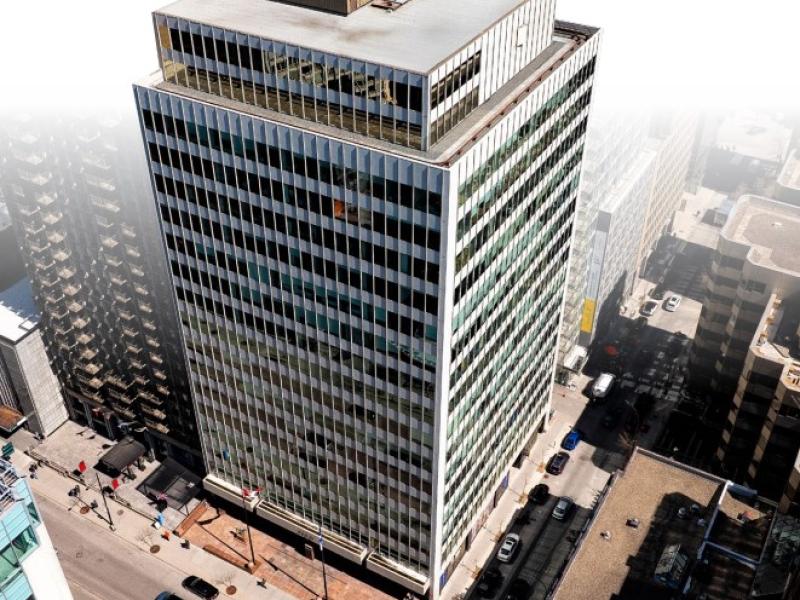
Montreal could soon be home to a new city within a city with 15,000 housing units in the Bridge-Bonaventure sector, not far from its downtown core.
That’s the vision of the Chamber of Commerce of Metropolitan Montreal which issued a new report on the proposed development on April 19. The report coincided with a Strategic Forum on Major Projects in the city that was organized by the chamber and held the same day.
Bridge-Bonaventure is a 1.4-square-mile primarily industrial site close to Old Montreal, downtown and the Griffintown neighbourhood that borders the St. Lawrence River. It houses some of the city’s iconic structures, including the Farine Five Roses sign, Silo No. 5 and Habitat 67.
The site could also house a REM light-rail train station, noted Michel Leblanc, president and CEO of the Chamber of Commerce of Metropolitan Montreal.
Opened last year, the line that runs between downtown and the South Shore already passes the site.
Major developers want to work together
Leblanc said Bridge-Bonaventure marks “one of the rare times” developers have united to create a common vision for the site.
Some of the city’s major developers, such as Groupe Mach, Broccolini and Devimco, hold interests in Bridge-Bonaventure as does the federal Canada Lands Company, all of whom are stressing the importance of working together to develop the site.
“It’s an immense project. There is no other option but to collaborate,” Devimco president Serge Goulet said during the Strategic Forum.
The timing for the project is good given the housing crisis, he said. He also insisted the development is progressing despite cynicism about the slow pace in getting it off the ground.
Bridge-Bonaventure represents “a rare opportunity to create a common vision,” said Roger Plamondon, former president of Broccolini.
Véronique Alepin, vice-president, real estate development and design at Groupe Mach, said Bridge-Bonaventure “will be an example for the future,” serving as a template for other major other projects to be achieved in Montreal.
Housing for up to 27,000 residents

The development will take as long as 15 years to complete but if all goes well and a master plan for the site is adopted soon, the first residents could be in place in 2027, she said.
The Chamber of Commerce report notes Bridge-Bonaventure could provide a key solution to Montreal’s housing crisis as the 15,000 proposed housing units at the site would house about 27,000. However, the City of Montreal so far envisages only 7,600 housing units at the site.
The challenge, though, is in developing the estimated $440 million in infrastructure work required in the sector.
Noting the City of Montreal does not have the means to finance the infrastructure work, the chamber proposes that a non-profit organization be created that would be responsible for financing the public infrastructure work at Bridge-Bonaventure.
Similar arrangements have been proven to work in Montreal and around the world, the report says.
The Canada Lands Company plans to develop a chunk of Bridge-Bonaventure, known as the Wellington Basin.
Canada Lands Company and Wellington Basin
Canada Lands Company president and CEO Stéphan Déry outlined the crown corporation’s plans for Wellington Basin during the Strategic Forum.
The nearly 34-acre Wellington Basin was once part of the Lachine Canal but has been mostly filled in. Canada Lands Company acquired the land from Transport Canada in 2010.
Canada Lands Company’s vision is for 2,800 housing units at Wellington Basin, of which 1,000 would be dedicated to affordable and social housing. Lots would be sold to developers who would be called upon to respect Canada Lands Company’s vision.
In addition to housing, the plan calls for an artisans quarter which would include an art school, plus a recreation and tourist area that would include a hotel and public beach that would open in 2030.
Déry said the site would include a 40-storey building, a form of urban densification that would enable three parks to be built in the area.
The area would also be walkable with neighbourhood stores, meaning that it would only take “five minutes to find a baguette.”
He said Canada Lands Company will spend $70 million to decontaminate the site.
The plan will need approval from the City of Montreal and could take 10 to 15 years to complete.
Canada Lands Company hopes to see shovels in the ground by 2025.










